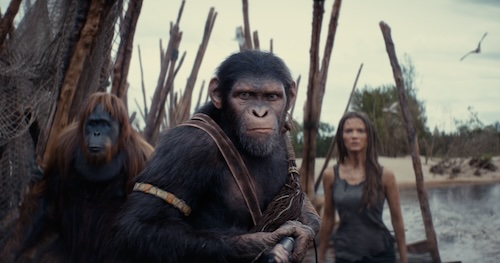
Apes will rule the world once again this summer. Kingdom of the Planet of the Apes (coming to Cineworld on May 9th) continues the story of a future Earth where the human race has ceded control to a race of super-intelligent simians.
It’s the latest entry in an enduringly popular, 56-year-old franchise that’s already spawned nine movies, a TV spin-off, a cartoon, lots of toys and – in The Simpsons universe, at least – a Troy McClure-starring musical.
Here’s everything you need to know about the eagerly anticipated new movie, and why this “coming-of-age story” is set to mark an exciting new evolution for the hit saga.
What is the story of Kingdom of the Planet of the Apes?
In the previous movie War for the Planet of the Apes (2017), the Simian Flu that wiped out most of Earth’s human population mutated. Mankind subsequently regressed to a more primitive state and lost the ability to talk – much like the people Charlton Heston’s Taylor encountered in the original 1968 movie.
In the new film Kingdom of the Planet of the Apes, some 300 years have passed, and apes have taken humanity’s place as the dominant species on the planet. Caesar, the noble leader of the ape civilisation (played by Andy Serkis), may be long dead, but his legacy lives on in a rapidly evolving simian society.
An ambitious bonobo king (X-Men Origins: Wolverine’s Kevin Durand) has dubbed himself Proximus Caesar in honour of his legendary predecessor and sees a bright future for ape-kind if they can harness the weapons and technology humans left behind. Unlike the original Caesar, however, Proximus has an appetite for conquering other clans and rules by fear rather than diplomacy.
The focus of the new movie – written by Rick Jaffa and Amanda Silver, the duo behind the recent Planet of the Apes trilogy – is an inquisitive teenage chimpanzee called Noa (IT’s Owen Teague). While Caesar was the elder statesman who carried the weight of the world on his shoulders, Noa is very much the naive, new kid on the block.
Jaffa has described Kingdom of the Planet of the Apes as a “coming-of-age story”, while director Wes Ball (The Maze Runner) told Total Film (via GamesRadar+) that: “Noa fits that archetype of Frodo Baggins and Luke Skywalker. He is going to undergo this great transformation, or at least the beginnings of one in this movie, where that innocence is robbed of him a little bit.”
Noa has grown up in the isolationist Eagle Clan, but starts to ask questions when he realises village elders haven’t been entirely forthcoming about the origin of the species – and what lies in the mysterious Forbidden Zone. His subsequent quest for answers brings him into direct conflict with Proximus, as he befriends a young human called Mae (The Witcher’s Freya Allan) who seems a lot more intelligent than the people around her.
Where does the new movie sit in the wider Planet of the Apes saga?
Kingdom of the Planet of the Apes is a sequel to the trilogy that began with 2011’s Rise of the Planet of the Apes, and a prequel to the classic 1968 original.
Rise of the Planet of the Apes is ground zero for the story in more ways than one. It’s here that a scientist’s efforts to find a cure for Alzheimer’s disease create Caesar and an entire generation of super-intelligent chimpanzees, bonobos, gorillas and orangutans – before inadvertently unleashing the Simian Flu that causes the human race’s downfall.
Sequels Dawn of the Planet of the Apes (2014) and War for the Planet of the Apes chart the emergence of Caesar’s brave new ape world as humanity makes its last, desperate, violent bid for survival.
Not just a continuation of the ongoing story, Kingdom of the Planet of the Apes’ all-new characters and futuristic setting are designed to work as a new jumping-off point for the franchise. And if the filmmakers have their way, it’ll also be the start of a new series of films bridging the gap between the most recent trilogy and the original Planet of the Apes.
In the latter film, a trio of 20th-century astronauts (led by Heston’s Taylor) crash-landed on a strange alien world ruled by apes – and only learned they’d been on Earth all along when Taylor had an iconic close encounter with a half-buried Statue of Liberty.
“From the beginning, we thought of this as a trilogy,” Kingdom of the Planet of the Apes director Wes Ball (The Maze Runner) explained in an interview with Empire. “We had these grand ideas of where it could ultimately go and how it could fit into the legacy of these movies.”
There’s no need to worry about Noa and Proximus running into visitors from outer space just yet, however. With Kingdom of the Planet of the Apes set some time around the 24th century and the original 1968 movie set centuries later in 3978, there’s plenty of canonical material left to explore before the two timelines collide.
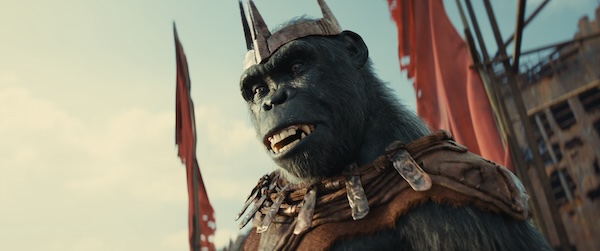
What about the other Planet of the Apes movies?
The original Planet of the Apes film was followed two years later by the apocalyptic sequel Beneath the Planet of the Apes. Although future Earth was ultimately destroyed by an atomic bomb, lead chimps Cornelius (Roddy McDowall) and Zira (Kim Hunter) escaped on Taylor’s ship before a time warp carried them back to 20th century Los Angeles in 1973’s Escape from the Planet of the Apes – in which Zira gave birth to their son, Milo.
Subsequent follow-ups Conquest of the Planet of the Apes (1972) and Battle for the Planet of the Apes (1973) showed how Milo (now renamed Caesar – sound familiar?) formed a new ape civilisation. These movies contradict the origin story present in the recent Apes trilogy, though as Wes Ball told Total Film, “It’s not a rigid canon thing”.
Tim Burton’s 2001 “Re-imagining”, where Mark Wahlberg played an astronaut marooned on an all-new ape-world, exists in an entirely different continuity.
How does Kingdom of the Planet of the Apes evolve the effects used in the franchise?
Planet of the Apes has come a long way since Academy Award-winning prosthetics transformed actors into apes in the original movie. Even so, when it comes to making the world believe a chimp can talk, human performances remain just as important as they were back in 1968.
Actor Andy Serkis had already cemented himself as a performance capture pioneer when he signed up to play the computer-generated Caesar in Rise of the Planet of the Apes and its two sequels. He had already played Gollum in Peter Jackson's The Lord of the Rings trilogy (2001-2003) and the titular giant gorilla in Jackson's remake of King Kong (2005).
Although Serkis doesn’t appear in Kingdom of the Planet of the Apes, he’s been on hand to share advice on moving and talking like a simian. The cast also went to “ape school” for six weeks with movement coach (and Cirque du Soleil veteran) Alain Gauthier.
James Cameron’s blockbusting Avatar sequel The Way of Water (2022) has been a major influence on the production. The VFX geniuses at Wētā worked on both Avatar and the recent Apes movies, and they brought the same pioneering Avatar tech to the Australian set of Kingdom of the Planet of the Apes.
This largely came about via state-of-the-art two-camera rigs that allowed the crew to capture the actors’ facial performances in 3D. Advances in machine learning have also helped them to add extra detail to the animation, meaning that the movie’s hirsute stars are set to look more realistic than ever before.
Why do filmmakers keep returning to the Planet of the Apes?
The Planet of the Apes movies have always occupied that rare sweet spot where big-budget movie spectacle can co-exist with serious, real-world issues. The original film borrowed heavily from its source material, French author Pierre Boulle’s 1963 novel La Planète des Singes, but screenwriters Michael Wilson and Rod Serling (creator of the legendary TV series The Twilight Zone) also brought plenty of new ideas to the mix – most notably the pivotal twist that the titular alien world was the Earth of the future.
Subsequent themes of discrimination, and humanity bringing about its demise via nuclear apocalypse, also felt incredibly pertinent amid the US civil rights movement and the Cold War. Perhaps more crucially, the irresistible blend of astronauts, action and talking chimpanzees supplied the mass, all-ages appeal on which lucrative franchises are built.
With sequels, TV shows and merchandise trailing in its wake, Planet of the Apes was a bona fide blockbuster nearly a decade before the success of Star Wars (1977) changed cinema forever. Indeed, it’s remarkable that more than a quarter of a century passed between the last gasps of the original franchise and its Tim Burton-directed resurrection, although Arnold Schwarzenegger was attached to an aborted Apes remake in the ’90s.
Burton’s film is arguably more memorable for Rick Baker’s magnificent simian prosthetics than its story, but the franchise’s intelligent 2011 comeback was a worthy successor to the original film. Themes of animal rights came to the fore, while the use of a killer virus (rather than the atomic bomb) to decimate the human race tapped into pertinent 21st-century fears.
With a new civilisation still finding its feet, Kingdom of the Planet of the Apes is primed to continue crossing the streams between entertainment and ambitious, allegory-loaded sci-fi storytelling. Are the apes doomed to repeat the mistakes of their human predecessors? We’ll have to watch to find out…
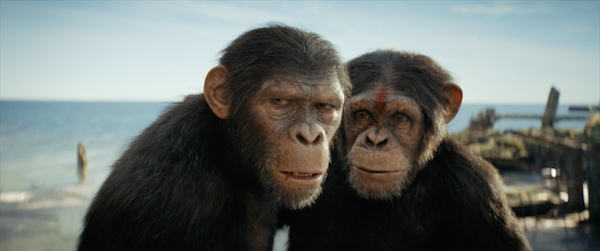
Click the link below to book your tickets for Kingdom of the Planet of the Apes. It opens at Cineworld on May 9th in IMAX, 4DX, ScreenX and Superscreen.
BOOK KINGDOM OF THE PLANET OF THE APES TICKETS
Richard Edwards is a former editor of SFX, the UK’s biggest-selling science fiction and fantasy magazine, and has spent most of his career writing about exciting adventures on alien worlds. Now a freelance journalist, his words can be found in SFX, Total Film, GamesRadar+, Space.com and beyond.
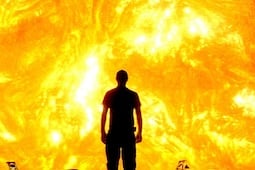
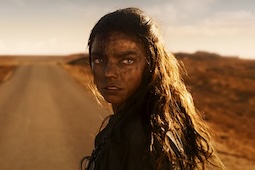
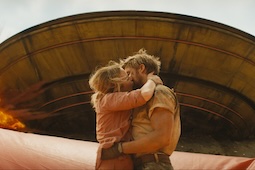
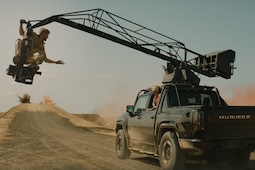
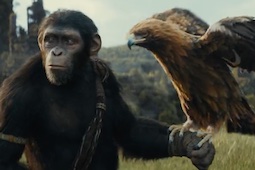
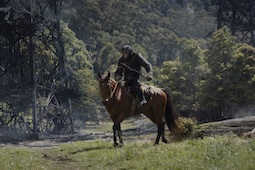

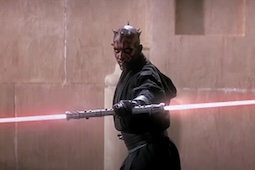
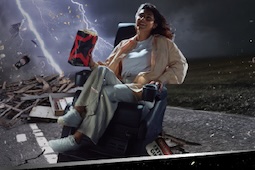
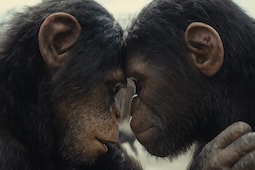
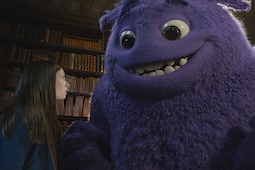
.jpg)


.jpg)
.png)





